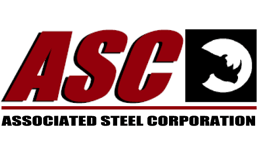In the steel industry and in the most general terms, anytime you see the word “stock” attached to another word; think, “stock used to make”. Barstock, Bushing Stock, Rifle Barrel Stock, Pump Shaft Stock, etc. would be stock that you can use to make those items. All details need to be clarified; is it pre-drilled, pre-hardened? What is the finish allowance? The term “stock” just means “may be used for”. Facetiously, a tree might be “Home Construction Stock”. i.e. not the finished product.
Keystock is generally a square or flat shaped lower to mid strength metal, either alloy or carbon steel, that is used to make keys. Those keys are inserted into shafts. A drive motor chuck will engage with the protruding key, and rotate the shaft. The idea is that this key is of less strength than the expensive shaft, so that if something interrupts the motion and causes failure, it will be the cheap little key that fails not the bin expensive shaft. Clear the obstruction, put a new key in, and you’re good to go, hopefully with an undamaged shaft.
The perfect piece of keystock would have less mechanical strength than the shaft, tuned to the actual application, but close enough that the shaft didn’t fail prematurely, contributing to expensive downtime. It would also be a cold drawn bar with good cross-sectional accuracy and a close oversize tolerance. The ideal oversize tolerance for many years was considered to be +.002″/-.000″. That tolerance would allow you to machine a standard keyway, in which the key would fit it in nice and snug. Undersized tolerance resulted in sloppy, loose keys. Too much oversize required un-welcomed machining.
My first experience with keystock was when I was about 10 years old. My uncle took me fishing in Canada. We were in a small aluminum boat with a little outboard motor. We were trolling at a very slow speed and he let me captain the “ship” for awhile. His only caution; stay away from the shallows and weeds; the only things I seemed to have a talent for. Every few minutes we snapped a key when the prop would strike something. We went through an entire little metal pill box of keys. That experience, and his humorous disapproval, stayed with me. The solutions were; chuck me out of the boat, or get somewhat stronger keys.
There is the conundrum. Too soft of a key and you have frequent expensive delays. Too hard of a key and you risk damaging an expensive shaft. (Goldilocks and the porridge issue).
Decades ago, Moltrup Steel, Pennsylvania, was considered the benchmark for keystock tolerance and cross-sectional accuracy. Having failed to secure the quality sufficient to satisfy their own needs, they embarked on producing the finest grade of keystock available. “Moltrup Quality” actually became a legitimate descriptor. I still see reference to Moltrup Keystock today, but am unfamiliar with the exact specifications, or how closely it follows the original “Moltrup Quality” of the past. Moltrup closed in 2002 and it has been my experience that the exacting tolerances disappeared with it. (Associated Steel always maintained a substantial inventory of Moltrup Quality material. It is a diminishing commodity but worth checking). When Moltrup closed, the potential market did not seem sufficient to justify the additional die work and drawing that would insure that high degree of accuracy. The tolerance on keystock gradually opened up to +/-.004″ to .007″ (that’s plus or minus). Even with sources that promote “Keystock”, or Moltrup Quality, pay close attention to the actual tolerance that you will most likely get.
The hardness (through multi-pass cold drawing/strain hardening), tolerance, and cross-sectional accuracy are all doable. Expensive, but doable. Requires a lot of fiddling in production for an item that does not represent any significant tonnage. Until something changes, keystock that is fine-tuned to allow maximum performance of the esoteric shaft application you are dealing with, will have to be made. Your choice, either make it, or chuck the kid out of the boat.
-Howard Thomas, April 3rd 2020
